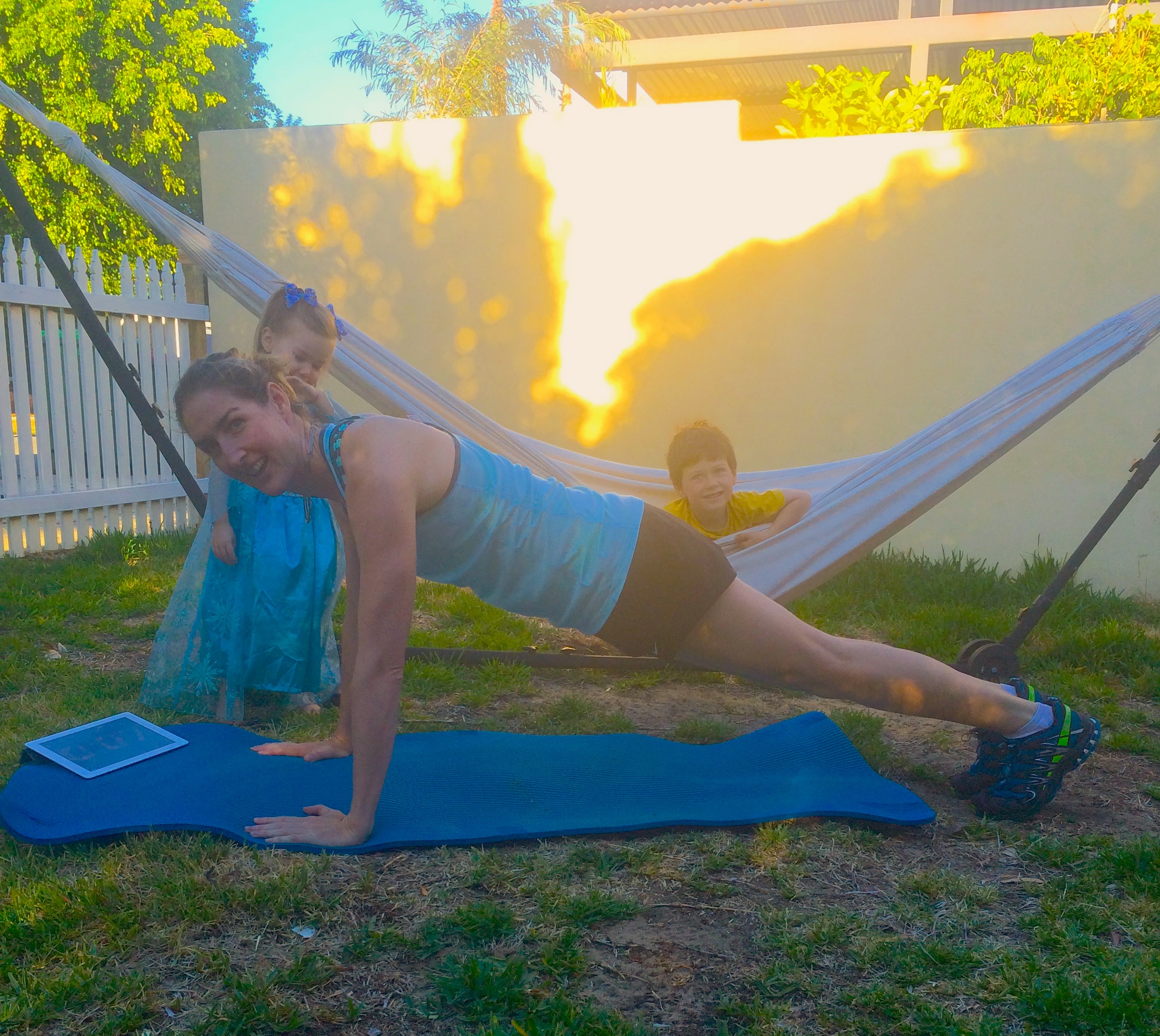Working exercise into your everyday life!
Working exercise into your everyday life!
By Sindy Rollins (BSc. Physiotherapy, PGDip. Neuromusculoskeletal Physiotherapy, MACP, AHPRA, HPC. APPI Pilates presenter, Perth. APC Clinical Exams Preparation course presenter)
I am a working mother with 2 gorgeous children who are both of pre school age. Since moving to Australia and away from grandparent support, I can sometimes feel a little overwhelmed by the requirements of my everyday life and struggle to see how I can fit in those essential exercises which I know I need to do, not only to make me feel better on the outside, but on the inside too. The research suggests that participation in physical activity is associated with higher levels of life satisfaction and happiness (Stubbe et al., 2007), improved resilience against the effect of stress (Strohle 2007), as well as reducing your chance of being affected by medical conditions such as diabetes, some cancers and certain heart conditions (Stewart et al., 1994). I certainly know I feel better after completing some specific physical activity.
The Australian government guidelines on physical activity levels in adults between the ages of 18-64 are, that we should accumulate 150 to 300 minutes (2 ½ to 5 hours) of moderate intensity physical activity or 75 to 150 minutes (1 ¼ to 2 ½ hours) of vigorous intensity physical activity, or an equivalent combination of both activities, each week. You should also do muscle strength work atleast 2 days a week, working all the major muscle groups – legs hips back abdomen chest shoulders and arms.
Every bodies life is different, so it is all about setting yourself those small but achievable goals. Breaking it down into bite size pieces.
I decided to try and set some SMART goals to assist me in achieving my exercise aims. SMART means they must be Specific, Measureable, Achievable, Realistic and Timed. In my role as a physiotherapist I am often guiding others on setting SMART goals, so I thought it was time I used this strategy to help myself.
The things I planned to do:
- Break the work outs down into manageable chunks of 10-20 minutes-.
- Aim to do 20 min of personal Pilates exercises 5x week, using one of my APPI DVD’s so I can let someone else pick the exercises and let myself focus on the activity.
- Pick one area a day to focus on ie gluts, abdominals, dynamic stability, upper limb or mobility.
- Go to bed 30min earlier and get up 30 min earlier to allow me to do a little activity before the household fully wakes up (but sometimes there still might be a little one sitting on me during the shoulder bridge).
- Have my work out mat and small equipment ready to hand as a little prompt and time saver, so I can lie on my foam roller for a few minutes at moments through the day.
- Meet a friend once a week for an early morning healthy HIT session in the great outdoors.
- Incorporate a set of 10 lift and lowers or mini squat/plié when I am cleaning my teeth, washing up, cooking- complete 10 sets of 10 reps a day. The Foot and ankle complex is essential for balance and control and with age we start to lose foot and ankle strength, range and sensory motor control (Bok et al, 2013).
- Do a family dog walk everyday for 30-60 minutes.
